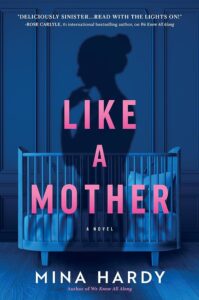The rise of the unreliable narrator in fiction has made huge success of bestsellers like The Girl on the Train, Gone Girl, and Fight Club. The narrators of these stories have compelling tales to share, but what makes them even more exciting and keeps us turning those pages is not what they’re telling us…but rather, what they aren’t.
I first listened to The Girl on the Train and was immediately drawn in by the weaving stories of several different main points of view. It’s Rachel, though, who’s telling a story we simply can’t be expected to believe. Her drinking means that she can’t really trust her memories (or rather, those big blank spots in them) and therefore, neither can we. Similarly, the heroine of The Woman in the Window struggles with alcohol and drug abuse, which makes the story we see through her eyes a patchwork of assumptions.
Other popular books with unreliable narrators rely on mental illness, or the passage of time, or amnesia, or other explanations for why the person telling us this story shouldn’t be believed.
When the main point of view character is lying to us, the reader, we learn not to believe what they have to say and start looking for clues to what’s going on in what’s happening around them. It might take us a while to understand the narrator can’t be trusted, but once we do, every word they say, every action they take, is ripe for dissection. In the very best stories with unreliable narrators, we get to the end of the story breathing as hard as if we just ran a race, or maybe shouting out a triumphant “I knew they weren’t telling the truth!”
But what about stories that don’t have an unreliable narrator and instead feature unreliable secondary characters?
What if the main character is revealing everything she knows to be true all along, and yet nothing about the story is actually happening the way we think it is?
For this to work, we have to be deep inside that main character’s head. First or third person point of view, it doesn’t matter, so long as all we know is what they know…because when everyone around them is filling in the pieces of the puzzle that turns out to be of a picture that doesn’t match the front of the box, who do we point the fingers at?
Unreliable narrators hide their truth with evasion, amnesia, passing out drunk, or careful literary sleight of hand. When the secondary characters are doing all the misleading, though, they can just straight up…lie.
Yep, I said it. They lie. They lie to the main character, which leads to misunderstandings, bad choices or tragedy. They lie to the reader, too, through that narrator we’re rooting for.
Are you the sort of person who reads a book or watches a movie and screams “no, you fool! Don’t go into that dark basement alone!” If so, you might be the sort of reader who likes books with untrustworthy secondary characters. When everyone’s lying to your heroine, she’s bound to do some stuff you think is pretty dumb. But how can you blame her, when the people who are supposed to love and take care of her are deviously and purposefully leading her astray? Unreliable narrators get themselves in that hot water, but leading characters surrounded by dastardly, lying secondaries end up in the boiling pot no matter what they try.
A few of my favorite books with unreliable narrators:
American Psycho by Brett Easton Ellis: You can’t trust a word Patrick Bateman says, because he’s clearly unhinged. Or is he? Maybe he’s just a horrible person. Or maybe he’s imagining it all. Who knows? (Easton Ellis’ more recent book, Shards, gave me an unreliable narrator vibe for a totally different reason. The author is the main character. But he’s not. But he sort of is…)
Never Lie by Frieda McFadden: This book should be called Nothing but Lies, and I mean that in the best way. I suspected something was up but couldn’t figure out who was telling the lies. It kept me riveted and shouting out my warnings to the point-of-view characters.
Behind Her Eyes by Sarah Pinborough: This was my first read from Pinborough, and I had no idea there even was an unreliable narrator, that’s how unreliable the narrator was…except it was really a secondary character pulling that wool over the reader’s eyes. Or was it? I’m still not sure who to trust. Probably nobody! Another riveting read!
Of course, The Girl on the Train by Paula Hawkins was one of the first of more recent releases to set the unreliable narrator train on the tracks. It’s a classic choice if you want to dive deeply into a story told in part by someone who literally cannot remember huge chunks of what she needs to know in order to put all the pieces together.
I’ve written a few unreliable narrators myself, so in my most recent release from Crooked Lane Books, Like A Mother, I didn’t want the readers to feel like the main character, Sarah, wasn’t to be trusted. I hoped the readers would connect with her and her story with an understanding that she felt forced into the choices she has to make. Told in third person point of view, Sarah’s is the only perspective we have, so although it’s not a first-person story, we only ever know what Sarah knows. And what Sarah knows is not always the truth. In fact, I’d say that the only person in the whole book that doesn’t lie is Sarah, herself. Everyone else? Utterly unreliable!
Sometimes, the best parts of the book are the parts that simply didn’t happen the way we’re told they did.
***


















